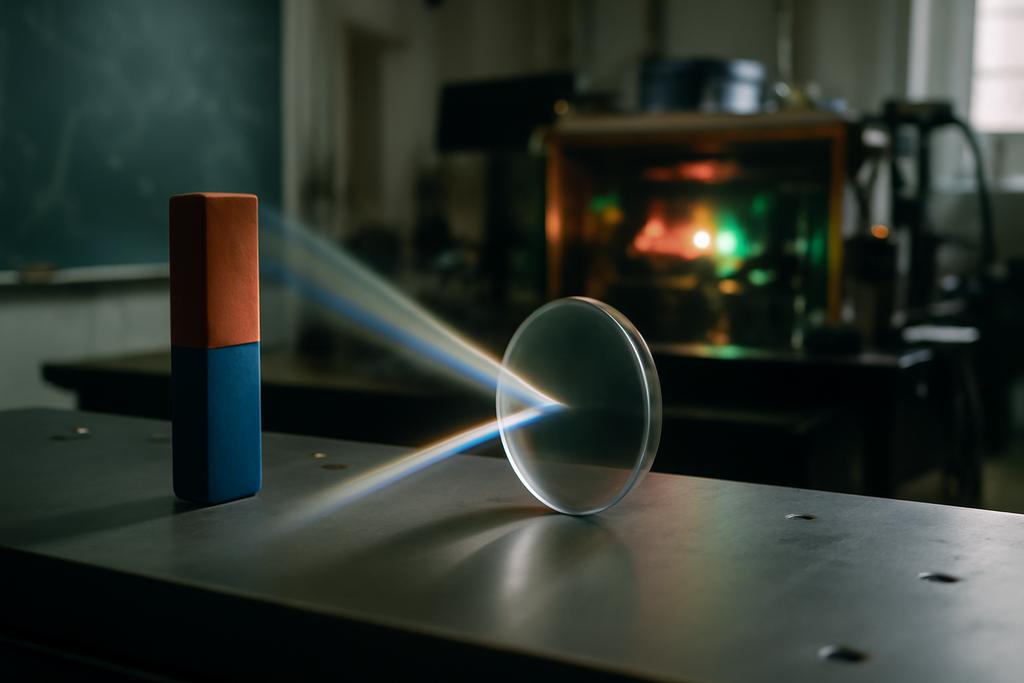The Ghost in the Quantum Machine
Imagine a microscopic world where even the faintest magnetic whisper can distort reality. This isn’t science fiction; it’s the intriguing discovery of researchers at Utrecht University, led by Nejc Blaznik, Dries van Oosten, and Peter van der Straten, who’ve uncovered a subtle but significant effect in how magnetic fields warp the path of light through ultracold atomic clouds. Their research unveils a hidden challenge in imaging these quantum systems and offers a clever solution to correct for these distortions.
A Quantum Dance of Light and Spin
The scientists work with incredibly cold atoms, chilled to temperatures near absolute zero. In this frigid realm, the atoms’ quantum properties become strikingly apparent. One crucial property is their “spin,” a kind of intrinsic angular momentum, like a tiny internal compass needle. The researchers probe these atoms using highly precise, circularly polarized light. Left-circularly polarized light and right-circularly polarized light interact with the atoms’ spins differently, creating a subtle but measurable change in the light’s phase as it passes through the atomic cloud. By carefully measuring these phase differences, scientists can map the distribution of spins within the cloud.
This technique, called spin-dependent off-axis holography (SOAH), is exceptionally sensitive, allowing researchers to study subtle quantum phenomena. However, the Utrecht team discovered a hidden problem: magnetic field gradients — tiny, uneven changes in the magnetic field across the atomic cloud — distorted the image. It’s as if a slightly misaligned lens created a blurry photo, obscuring the details of the atomic spin distribution. The images, they found, shifted unexpectedly.
Unveiling the Magnetic Mirage
The researchers developed a theoretical model that accurately predicts the effects of magnetic field gradients on the light’s phase shifts. The magnetic field’s inhomogeneity causes a kind of “birefringence,” where the light’s polarization affects its refractive index, creating uneven distortions akin to a shimmering mirage in the desert. This distortion significantly exceeded the size of spin domains that the experimenters wanted to observe, making the previously used data interpretation methods flawed.
The team painstakingly validated their model with experimental data. They measured the temperature-dependent shift of the images, finding a precise match with their theoretical predictions at higher temperatures. Even at extremely low temperatures, where the atoms are tightly packed and have much less energy to move around and cause distortions, a small residual shift remained—a clue pointing towards optical imperfections in the imaging apparatus.
A Digital Fix for Quantum Blur
The good news is that the researchers found a way to eliminate these magnetically-induced distortions. Using a technique called digital holography, they can capture the full complex field of the probe light. This offers a wealth of information far beyond a conventional image, allowing them to digitally undo the distortion induced by the magnetic field by multiplying their images with a synthetic phase mask that has been calculated numerically based on the known experimental parameters.
It’s a bit like having a sophisticated digital darkroom for quantum images. By applying a computationally calculated “phase mask” in the Fourier transform of their acquired images, the researchers can mathematically correct for the distortions. Think of it as using clever software to sharpen a blurry photo. This digital correction is incredibly powerful. It not only handles simple shifts, but can fix far more complex aberrations caused by intricate magnetic field landscapes, such as those found in atomic traps or chips.
The Broader Implications
This work holds significant implications for various fields. The study of spinor Bose-Einstein condensates — exotic quantum states of matter — hinges on accurate spin-resolved imaging. The refined method presented here improves the spatial resolution of such studies, enabling the observation of finer details within these quantum systems.
In addition, the findings have broader importance for quantum magnetometry—the art of measuring magnetic fields with extreme precision. By carefully accounting for magnetic-induced distortions, researchers can create more reliable and accurate quantum sensors, sensitive enough to measure the most elusive magnetic fields.
Further, the versatility of this approach extends beyond spinor condensates, finding application in imaging ultracold atoms held in complex magnetic landscapes, including tailored magnetic microtraps and atomic chips. By accounting for magnetic distortions, researchers can achieve much higher accuracy in mapping the spin distribution of the atoms that they study.
This research from Utrecht University is a testament to the power of combining theoretical modeling, precise experimentation, and clever data analysis. By acknowledging and correcting for subtle experimental imperfections, the scientists have paved the way for more accurate and insightful studies of ultracold atoms—and potentially, a deeper understanding of the fundamental laws of quantum mechanics itself.










